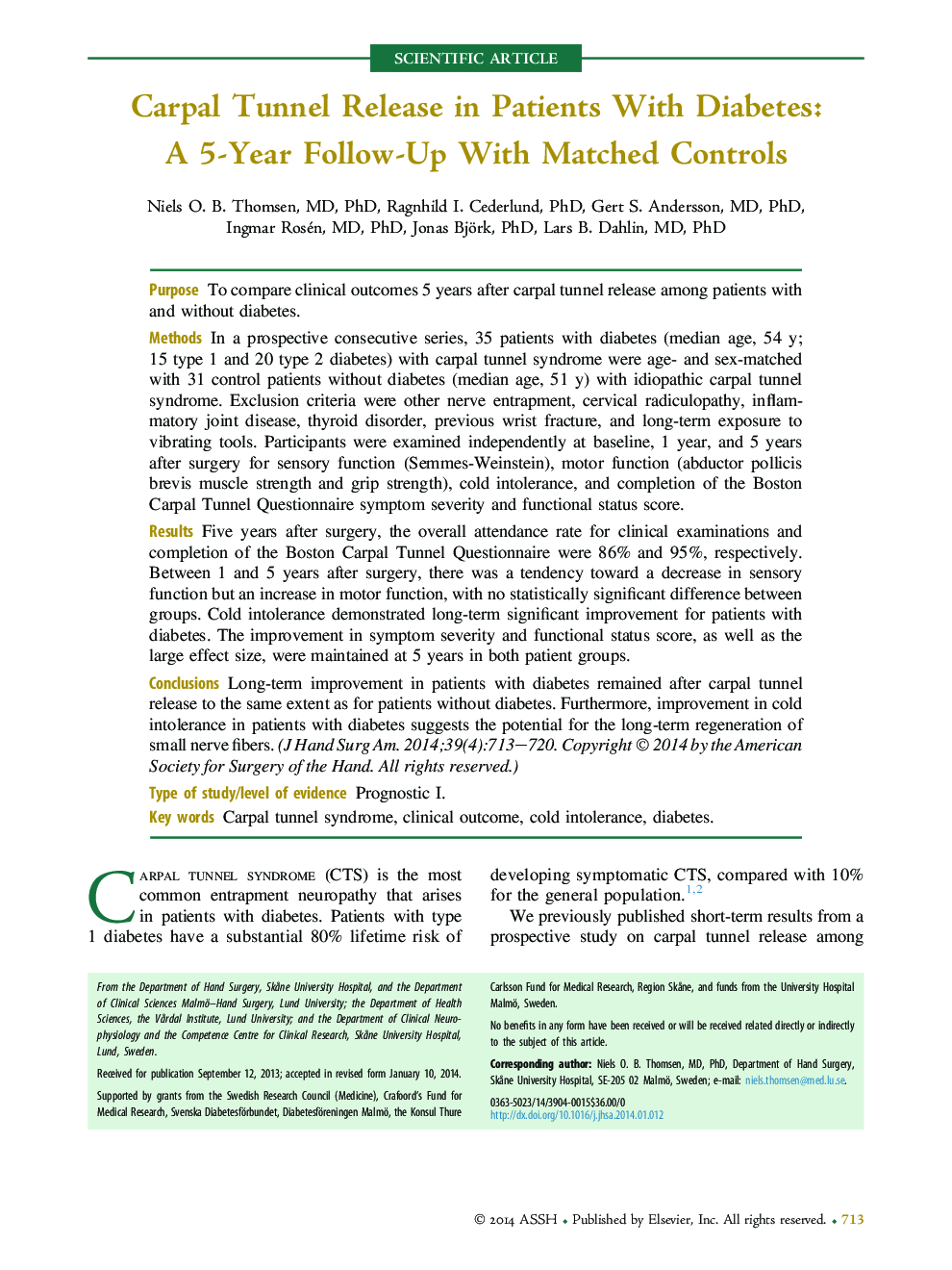| Article ID | Journal | Published Year | Pages | File Type |
|---|---|---|---|---|
| 4067683 | The Journal of Hand Surgery | 2014 | 8 Pages |
PurposeTo compare clinical outcomes 5 years after carpal tunnel release among patients with and without diabetes.MethodsIn a prospective consecutive series, 35 patients with diabetes (median age, 54 y; 15 type 1 and 20 type 2 diabetes) with carpal tunnel syndrome were age- and sex-matched with 31 control patients without diabetes (median age, 51 y) with idiopathic carpal tunnel syndrome. Exclusion criteria were other nerve entrapment, cervical radiculopathy, inflammatory joint disease, thyroid disorder, previous wrist fracture, and long-term exposure to vibrating tools. Participants were examined independently at baseline, 1 year, and 5 years after surgery for sensory function (Semmes-Weinstein), motor function (abductor pollicis brevis muscle strength and grip strength), cold intolerance, and completion of the Boston Carpal Tunnel Questionnaire symptom severity and functional status score.ResultsFive years after surgery, the overall attendance rate for clinical examinations and completion of the Boston Carpal Tunnel Questionnaire were 86% and 95%, respectively. Between 1 and 5 years after surgery, there was a tendency toward a decrease in sensory function but an increase in motor function, with no statistically significant difference between groups. Cold intolerance demonstrated long-term significant improvement for patients with diabetes. The improvement in symptom severity and functional status score, as well as the large effect size, were maintained at 5 years in both patient groups.ConclusionsLong-term improvement in patients with diabetes remained after carpal tunnel release to the same extent as for patients without diabetes. Furthermore, improvement in cold intolerance in patients with diabetes suggests the potential for the long-term regeneration of small nerve fibers.Type of study/level of evidencePrognostic I.
